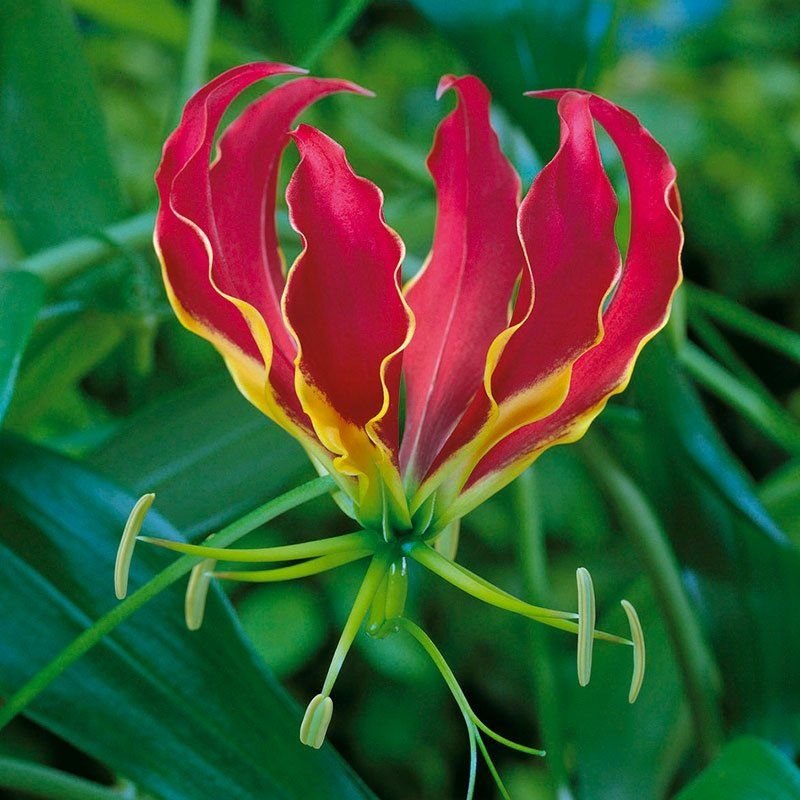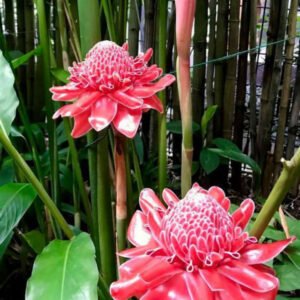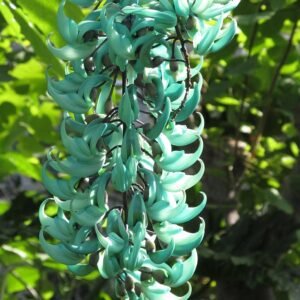Common Name: Flame Lily
Other Names: Glory Lily, Climbing Lily, Fire Lily
Scientific Name: Gloriosa superba
Family: Colchicaceae
Origin: Native to tropical and southern Africa and parts of Asia
Physical Description:
-
Flowers:
The Flame Lily is renowned for its striking, flame-like blooms. The petals are wavy and reflexed (curving backward), giving the flower a flickering flame appearance.
Colors range from vivid red and orange to yellow, often with gradations that enhance the fire-like effect.
Each flower has six long, arching stamens and a single central style, adding to its elegant, sculptural look. -
Leaves:
The plant has narrow, lance-shaped leaves that end in tendril-like tips, allowing it to climb by twining around nearby supports. -
Growth Habit:
A tuberous climbing vine, the Flame Lily can grow up to 6–10 feet (2–3 meters) tall, especially with proper support.
Care Requirements:
-
Light: Prefers full sun to partial shade
-
Water: Needs well-drained soil and moderate watering—keep soil moist during growing season, dry during dormancy
-
Temperature: Thrives in warm, tropical to subtropical climates; sensitive to frost
-
Support: Needs a trellis or other support to climb effectively
Toxicity Warning:
-
Highly toxic—all parts of the plant, especially the tubers, contain colchicine, which is poisonous if ingested.
-
Handle with care and keep away from pets and children.
Symbolism & Uses:
-
Symbolism: Represents passion, beauty, transformation, and pride, often revered for its dramatic shape and color.
-
National Flower: The Flame Lily is the national flower of Zimbabwe.
-
Medicinal Use (Traditional): Used in traditional African and Ayurvedic medicine, though dangerous due to its high toxicity—use is not recommended without expert supervision.




Reviews
There are no reviews yet.